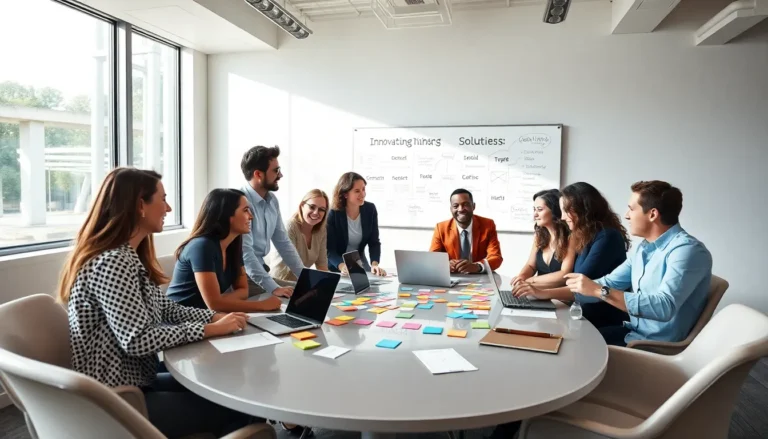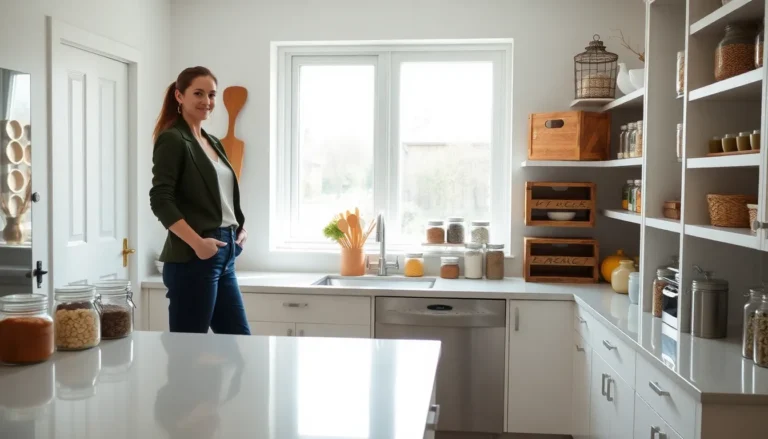Table of Contents
ToggleIn a world moving at breakneck speed, the ability to think critically and creatively isn’t just a luxury: it’s a life-saving skill. Imagine blending the analytical prowess of Sherlock Holmes with the imaginative flair of Leonardo da Vinci. Pretty exciting, right? Critical and creative thinking can rev up problem-solving engines, spark innovation, and make even the most mundane tasks feel thrilling. So, whether you’re a student trying to ace your exams or a professional aiming for that big promotion, these skills will elevate your game. Let’s jump into the nitty-gritty of why critical and creative thinking is the peanut butter and jelly of intellect.
Understanding Critical Thinking

Defining Critical Thinking
Critical thinking can be defined as the disciplined process of actively analyzing, synthesizing, and evaluating information. It allows individuals to navigate the complex landscape of arguments and evidence, providing clarity in decision-making. It’s not just about possessing a vast knowledge base: it’s about how one applies that knowledge. Consider critical thinking a superpower that transforms information into actionable insights.
Importance Of Critical Thinking Skills
In today’s information-saturated world, the ability to think critically is more important than ever. It empowers individuals to discern quality information from the noise, leading to better decisions in personal and professional life. Businesses, for instance, rely heavily on critical thinking to assess risks and formulate strategies. Engaging in critical thought can prevent costly mistakes and propel individuals toward success.
Key Elements Of Critical Thinking
Analyzing Information
Analyzing information involves questioning sources, recognizing biases, and dissecting arguments. A critical thinker looks beyond the surface to unveil underlying assumptions and logic. This skill helps avoid the trap of misinformation, which is rampant in social media today. By practicing this analysis diligently, individuals become adept at weighing different viewpoints before crafting an opinion.
Evaluating Arguments
Evaluating arguments is another cornerstone of critical thinking. This skill involves assessing the strength of evidence and the validity of reasoning. By considering counterarguments, one can refine their conclusions and ensure they stand on solid ground. Critical thinkers are not swayed by emotional appeals but instead look for logical consistency, which eventually leads to clearer insights.
Making Informed Decisions
The Role Of Creative Thinking
Creative thinking plays a vital role in making informed decisions. While critical thinking helps analyze the viability of options, creative thinking opens up new pathways that may not have been considered initially. It invites unconventional ideas and encourages innovative solutions, blending seamlessly with critical thought to enhance decision-making. When confronted with a problem, tapping into both types of thinking allows for a more comprehensive approach to life’s challenges.
Techniques To Foster Creative Thinking
Brainstorming And Idea Generation
Brainstorming stands out as a powerful technique for fostering creative thinking. It creates an open environment where ideas flow freely without judgment, allowing participants to express wild notions that could lead to innovative solutions. This technique can be practiced solo or in groups and often results in a plethora of ideas. Embracing all suggestions, no matter how far-fetched, can lead to a breakthrough.
The Impact Of Environment On Creativity
Environment significantly influences creativity. An inspiring space, whether bright and colorful or minimalist and serene, can catalyze creative thought. It’s essential to cultivate an atmosphere where individuals feel comfortable expressing ideas. Engaging with nature, changing scenery, or even rearranging one’s workspace can stimulate fresh thinking. Creating conditions that foster creativity is crucial for innovation and problem-solving.
Integrating Critical And Creative Thinking
Benefits Of Combining Both Thinkings
The intersection of critical and creative thinking offers a treasure trove of benefits. When both types of thinking are integrated, individuals become more adept at generating comprehensive solutions to complex problems. This combination empowers professionals to innovate while still maintaining logical defense for their choices. Also, it enhances adaptability in fast-paced environments, allowing individuals and organizations to pivot effectively in the face of change.
Real-World Applications
Education And Teaching Methods
In the realm of education, fostering critical and creative thinking is paramount. Schools are increasingly integrating these skills into curricula, emphasizing project-based learning, collaborative activities, and inquiry-based approaches. This education style cultivates students who are not only knowledgeable but also capable of thinking independently and creatively.
Career And Professional Development
For professionals, companies recognize the value of employees who can think critically and creatively. These skills lead to improved problem-solving abilities, effective teamwork, and innovative thinking, all qualities that are desirable in today’s competitive career landscape. By honing these skills, individuals can enhance their professional development and open doors to new opportunities.







